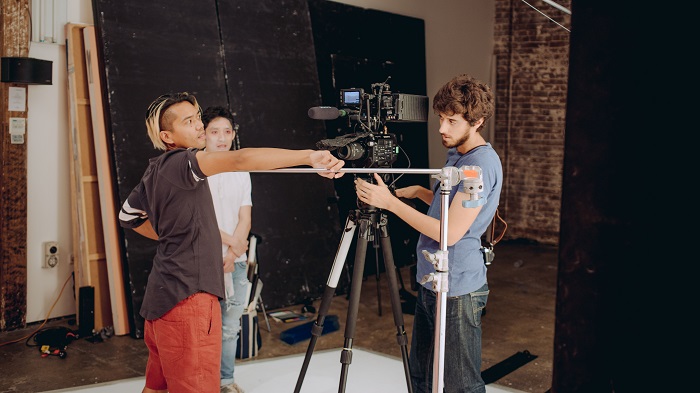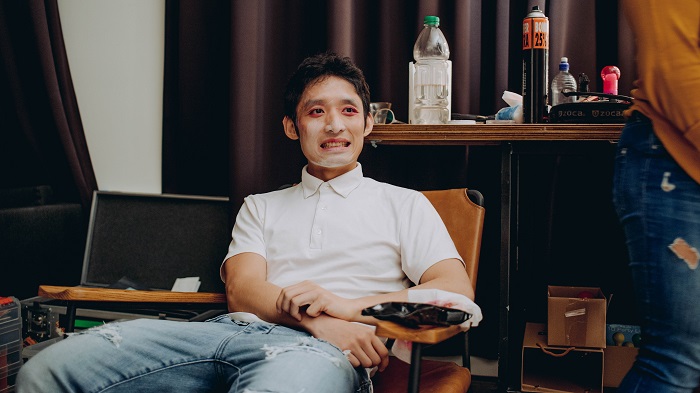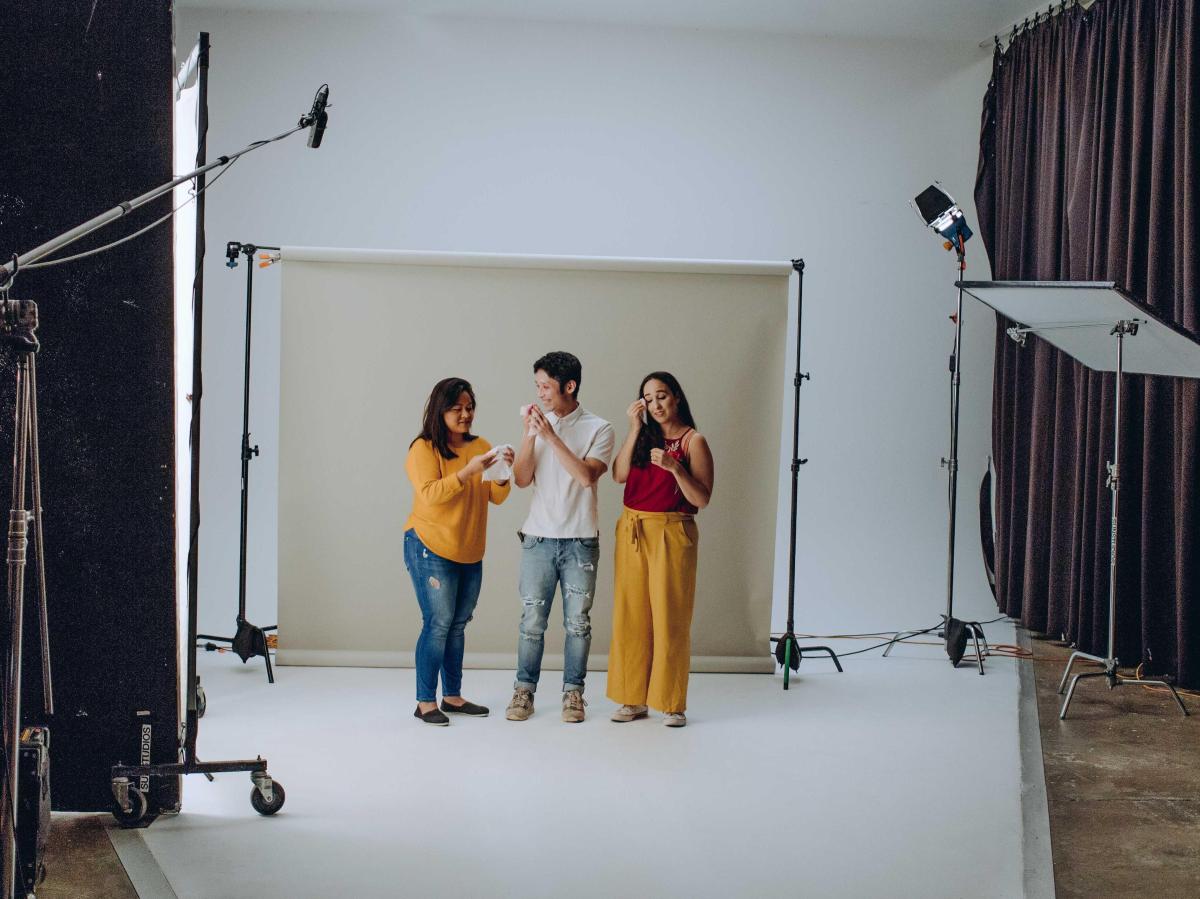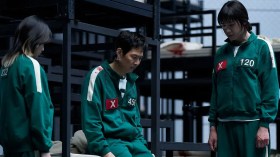Sophia Op, Sam Wang and Danielle Stamoulos in Shading. Supplied.
‘Yes I identify as “other” or “different” because that’s what people want to hear, right?’ Greek-Australian actor, writer and theatre producer Danielle Stamoulos said in the short documentary, Shading.
Stamoulos reflected: ‘I really struggle with identifying myself as a person of colour. I don’t feel like I classify as anything. I keep having this image in my head that I’m just kind of grey.’
Stamoulos is one of the three ethnically diverse actors featured in Shading, a documentary by Filipino-Australian screen creative Vonne Patiag. A project initiated for Diverse Screens Parramatta, Patiag was one of three artists chosen to produce a short film addressing themes around inclusion and diversity in the arts.
‘Shading presents three people of colour who just get the chance to be honest and talk about their experiences, in a way that they have felt like they have never been able to,’ Patiag told ArtsHub.
‘The film looks at the discomfort they feel, and it looks at the production process, on stage and screen – mainly in terms of make-up and lighting, and the creative process. Shading looks at how those roles are intrinsic in creating that misrepresentation of people of colour. And how difficult it is for a person of colour to raise their voice,’ he said.

Behind the scenes of Shading. Supplied.
A systemic institution’s idea of beauty
‘For me,’ Patiag said, ‘One of the systemic issues that we don’t often see is the actual practitioner, the makeup artists, or the cinematographer, or the lighting designer, will not always but most likely be white.
‘I think that is a major issue because they don’t bring a cultural nuance to a Filipino or Greek, or Cambodian, or Indian actor’s skin – they don’t understand how they can accentuate certain features, and how best to work with those types of skin tones. They tend to impress their ideas of beauty and makeup onto the performer,’ he said.
The practice in which the skin tone of a non-white person depicted in the media (screen industry, fashion industry, digital photography, mass media, and marketing) is physically modified or digitally altered to appear whiter is not a new phenomenon.
Patiag added: ‘It’s a weird thing in the industry, and I choose not to blame singular people, I want to blame the systemic institution.
‘It’s those questions on cultural validity – we have a diasporic community perpetuating those stereotypes – it’s that assumption that we should be working towards a very homogenised beauty. I like to make that distinction that it’s a diasporic issue within Western culture,’ he said.
Reflecting on her own experiences, actor and writer Sophia Op, featured in Shading, said: ‘I’ve had a few different experiences with people either commenting that my skin is too light or too dark. They say “Aw, your skin it’s nice and light, like, you look mixed.” I know it’s a compliment but it’s still really confronting, and I really struggle to process that as well,’ she said.
In Shading actor and writer Sam Wang said: ‘Yes, I do [identify as a person of colour], but I kind of just think of myself as a “generic Asian”.
‘There was this one time I think I was on stage, and I just kind of heard, “Oh, he’s got a bit of a yellow tinge,” I was like I think that’s me. Is that me?’

Sam Wang in Shading. Supplied.
Voices of colour unmuted
Throughout his career experiences Patiag has noticed a lack of opportunity for people of colour to articulate how they want to be presented on the screen, which in turn dis-empowers people of colour and deters them from speaking up.
‘They are often on a set, being the only person of colour on that set, and a lot of those times their voices are muted, or they just swallow their concerns,’ Patiag said.
As part of of his own experience Wang reflected, ‘I guess with the idea of raising discomfort it’s a two-edged kind of sword. I think that if you feel really that strongly about it then you’ll do it, but if you end up losing the fight then you have to accept that.’
Op said in Shading: ‘Sometimes it’s a challenge to voice discomfort. I sometimes feel like I’m a burden, and that I don’t have enough status in the room to just say, “I just want to look a little more like my skin tone.” Yeah, it can be difficult when you’re on a set with not as many people of colour.’
Patiag said he hasn’t set out to answer these questions of misrepresentation and skin colour. ‘I only wanted to show the questions. And look at the emotional ramifications of, I guess you would call it, “diversity box-ticking”.’
Stamoulos said in Shading: ‘I think as diverse artists we need to make sure that we are inclusive ourselves and we need to give the microphone to people whose authentic stories we want to hear from and not speak on behalf of them.’
Wang concluded in the film, ‘I think just having more stories can be great. I think if you start with quantity then you will get the quality sooner or later, and that will be the benchmark for the next set of stories.’
Vonne Patiag’s short documentary Shading is part of Diverse Screens Parramatta, Diversity Arts Australia.





